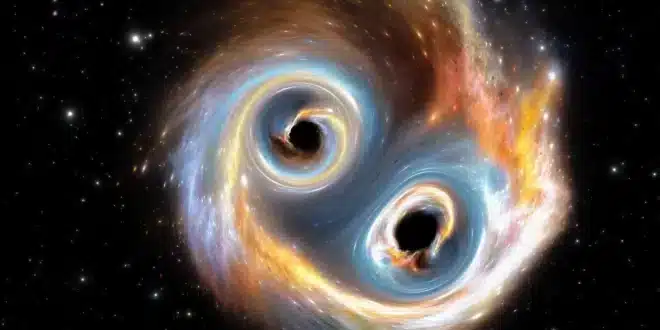Scientists have discovered a novel link between dark matter particles and supermassive black holes (SMBHs), potentially solving the long-standing “final parsec problem” in astronomy.
The study, published in Physical Review Letters, indicates that previously overlooked behaviors of dark matter particles facilitated the merger of SMBH pairs into larger black holes.
In 2023, astrophysicists detected a pervasive “hum” of gravitational waves throughout the universe. It was hypothesized that this background signal originated from millions of merging SMBH pairs, each billions of times more massive than our Sun.
Theoretical simulations suggested that these massive objects stall when they are nearly a parsec apart (about three light years), preventing them from merging.
Study co-author Gonzalo Alonso-Álvarez, a postdoctoral fellow in the Department of Physics at the University of Toronto, explained, “We show that including the previously overlooked effect of dark matter can help supermassive black holes overcome this final parsec of separation and coalesce.”
“Our calculations explain how that can occur, in contrast to what was previously thought,” Alonso-Álvarez added. The research was led by Professor James Cline from McGill University.
The team developed a new model demonstrating that when dark matter particles interact with each other, they do not get dispersed. This interaction maintains the density of the dark matter halo, enabling the SMBHs to spiral inward and merge.
According to the scientists, supermassive black holes are found at the center of most galaxies. When two galaxies collide, their SMBHs fall into orbit near each other. As they revolve, they are slowed down by the gravitational pull of nearby stars, causing them to spiral inward.
“The possibility that dark matter particles interact with each other is an assumption that we made, an extra ingredient that not all dark matter models contain. Our argument is that only models with that ingredient can solve the final parsec problem,” Alonso-Álvarez said.


